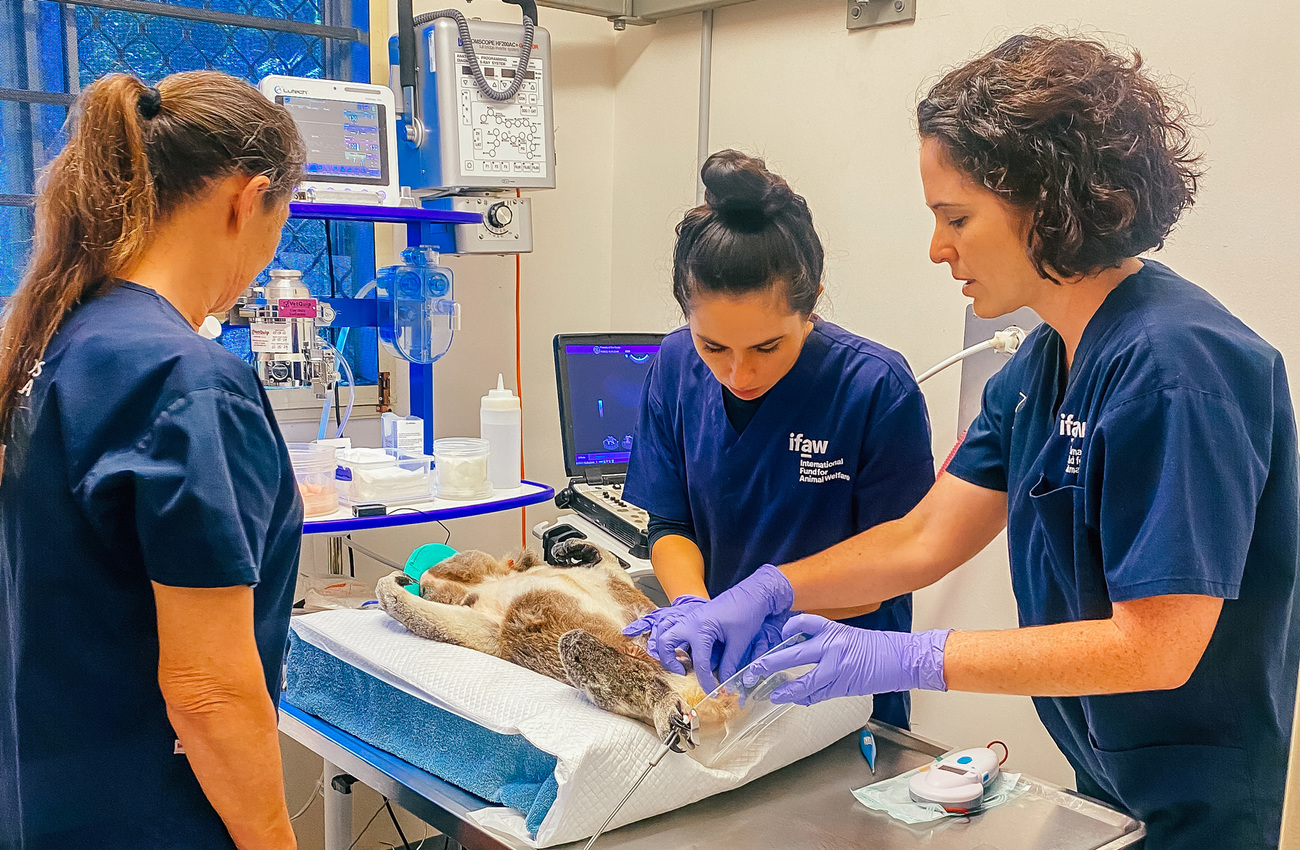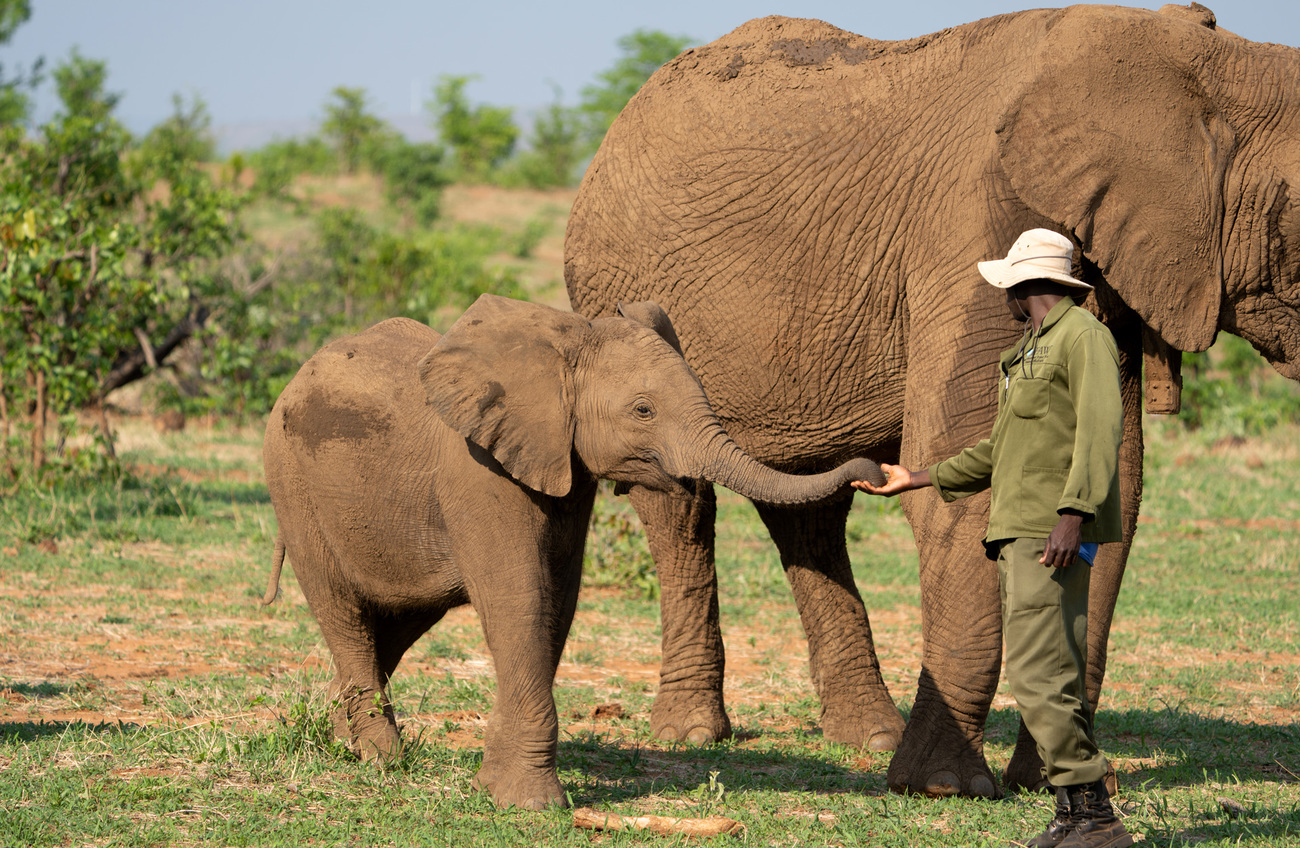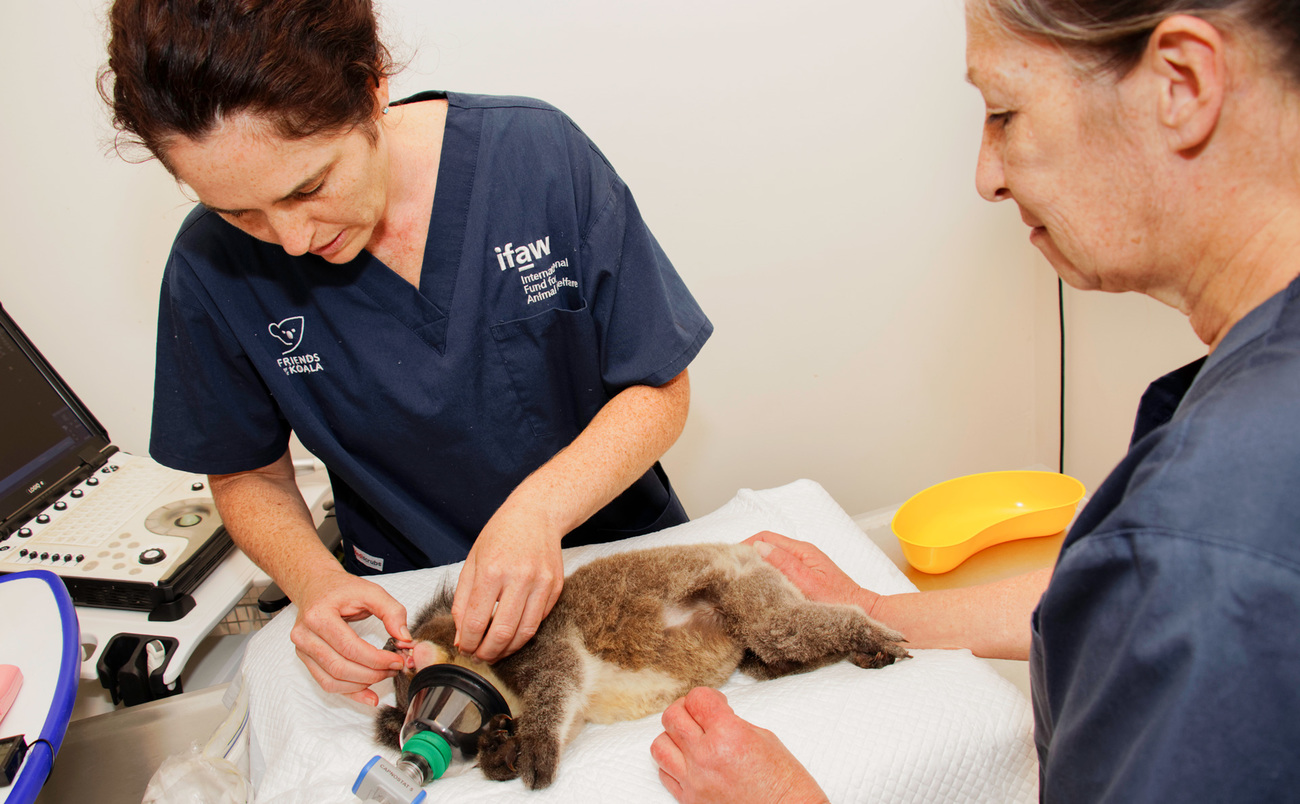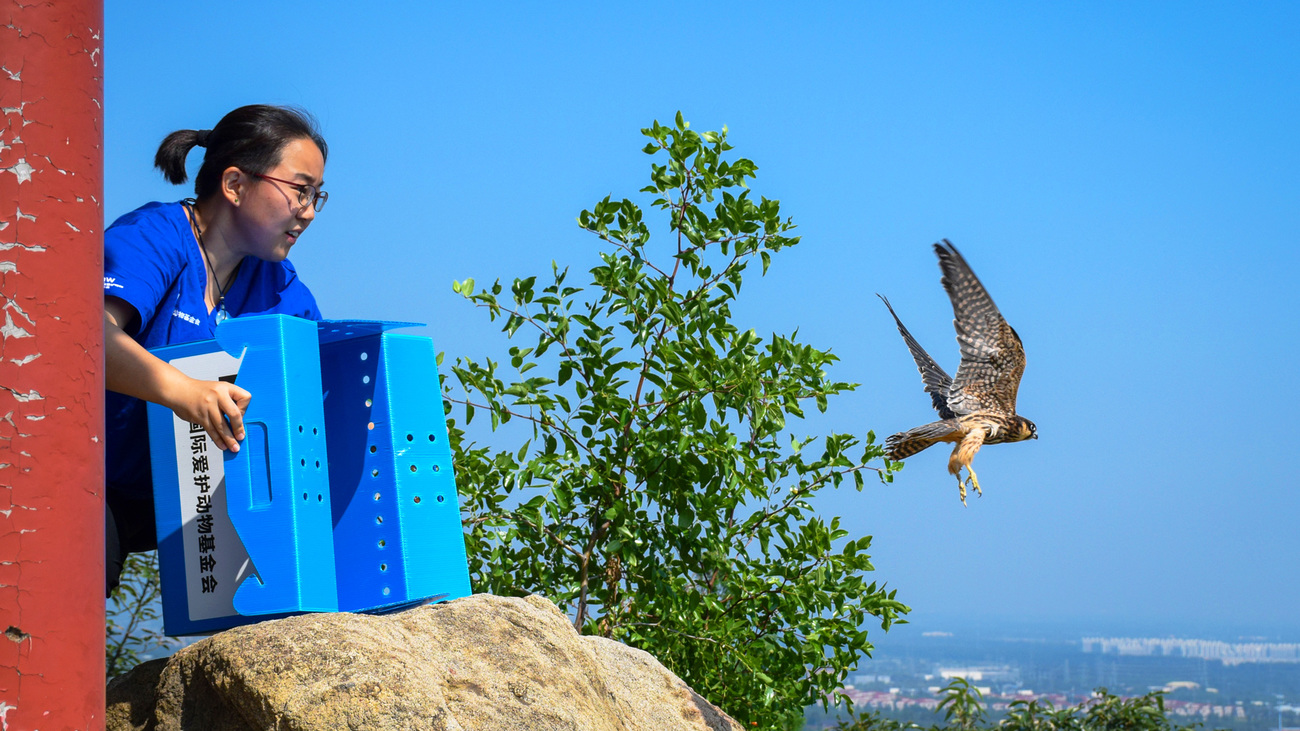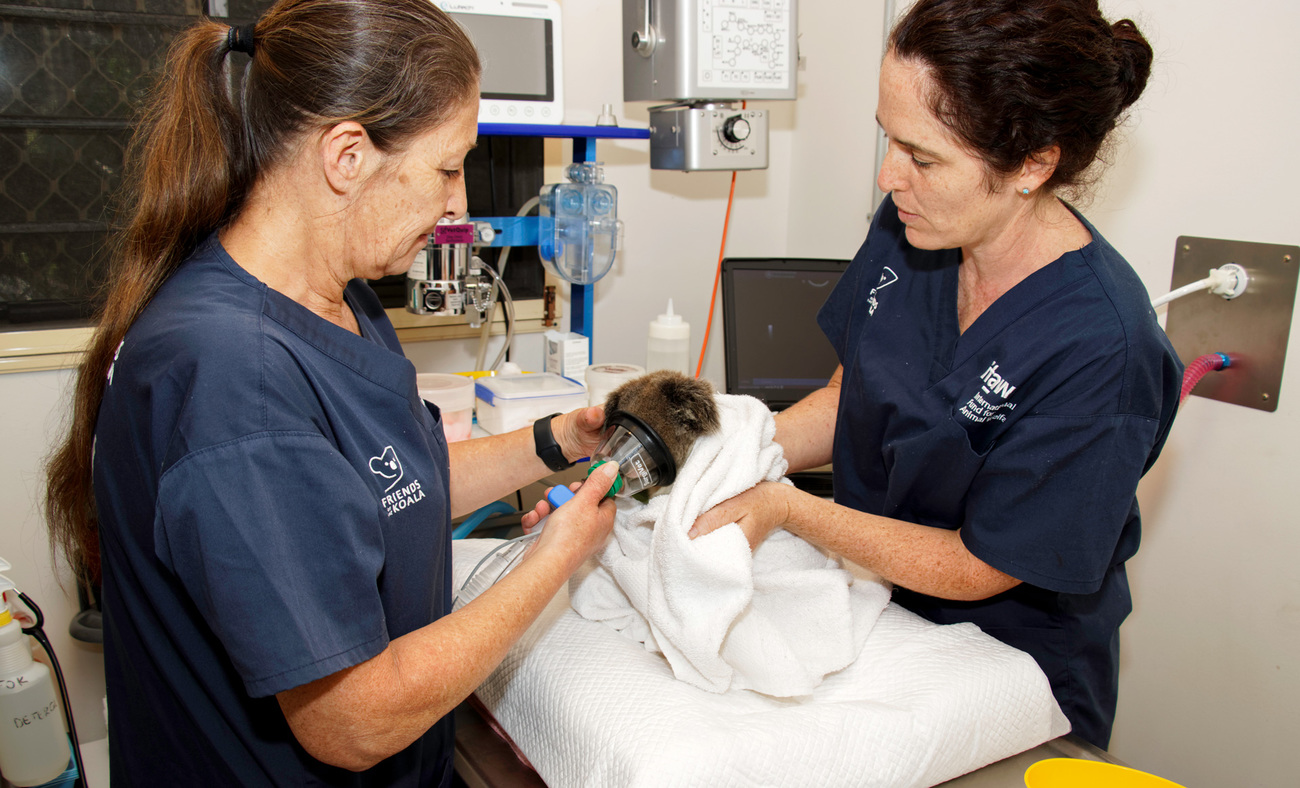wildlife rescue
wildlife rescue
IFAW’s Wildlife Rescue team operates globally and strives to prevent the suffering and improve the welfare of animals. With 5,342 animals rescued and 3,460 animals released in FY22, our Wildlife Rescue programme continues to make excellent progress in achieving a better quality of life for animals around the world. The focus is on rescue, rehabilitation, release and monitoring of wildlife, but we also work to share best practices, provide training and develop response and animal rescue networks. A critical part in the success of our work is engaging with communities to facilitate a relationship where both people and animals thrive in their shared environment. Communities in and around the places where wildlife are rescued, rehabilitated and released play a crucial role in the survival of nearly every animal species.
achieving a better quality of life for animals
rescuing and rehabilitating orphaned elephants
In the past financial year, we continued our work to rehabilitate orphaned elephants and keep them on their journey back to the wild. At the Wild Is Life (WIL) and IFAW-supported Zimbabwe Elephant Nursery (ZEN), Moses and Sally are two recently arrived elephant calves.
Moses, incredibly, found his own way to the WIL-IFAW release site at Panda Masuie in Zimbabwe back in July 2021 (the majority of our rescued elephants are found abandoned or hurt and transported to our center for specialised care). Moses walked at least four kilometres alone from Zambezi National Park. We don’t know what happened to Moses’s herd or how he found his way to the release site. The other elephants at Panda Masuie love spending time with Moses and he has grown very comfortable as a new member of the herd.
In October 2021, we airlifted a seriously injured elephant calf to safety after she was found entangled in a wire snare. Fishermen had spotted the approximately 18-month-old female calf wondering alone on the banks of the Zambezi River, in an area close to Chirundu on the Zambian border. She was dragging a snare and had wounds from surviving an attack by hyenas. In a complicated operation, vets removed a wire snare that had cut through her ear, leaving it almost amputated. She was immediately airlifted to our facility in Harare and we’re very pleased with her progress. She was given the name Sally and has bonded with the other rescue elephants we care for. Moses and Sally will remain in our care at Panda Masuie and, like all the rescue elephants, will eventually depart of their own accord to live free as wild elephants.
bringing rhinos back to Manas National Park
In 2021, IFAW proudly marked 20 years of impact through our partnership with the Wildlife Trust of India (WTI). One achievement of our powerful partnership is that today 54 greater one-horned rhinos roam and successfully breed in India’s Manas National Park. Twenty years ago, following a period of civil unrest in the region, one-horned rhinos were poached to local extinction in the area.
The Kaziranga National Park, in the same northeast Indian state of Assam, is home to the world’s largest population of greater one-horned rhinos. Rhino calves sometimes get separated from their mothers in this area, often during biannual flooding that forces animals to seek higher ground. IFAW and WTI decided to rehabilitate orphaned rhino calves from Kaziranga and then release them into Manas when they are two or three years old, an age at which they are more able to establish their own territory.
For more than 15 years, orphaned or injured rhino calves have been rescued and brought to the Centre for Wildlife Rehabilitation and Conservation (CWRC) during the annual floods in Kaziranga National Park. The calves are given 24/7 care and rehabilitated until they are able to be translocated to Manas National Park and released back to the wild. Since 2002, more than 7,000 wild animals have been rescued by the team at CWRC and its satellite units.
One journey that illustrates the success of this approach is Ganga. Her mother was lost to flooding in 2004 when Ganga was just four months old. Carers at CWRC hand-raised her until she was released in Manas in 2007. She continues to thrive today and has given birth to four calves over the years, with the latest calf arriving in July 2021. Her calves are doing well too—she’s even a grandmother. To date, eight calves have been born to rhinos rehabilitated by CWRC and released in Manas.
In addition to the rescue, rehabilitation and release of greater one-horned rhinos, IFAW-WTI has worked to increase the area of protected land around Manas National Park. As new human developments are constructed, there is a critical need for wildlife to move safely between protected landscapes. To address this concern, IFAW and WTI started the Right of Passage: National Elephant Corridor Project. The project has identified 101 linear strips of land that will allow elephants and other wildlife to travel from one landscape to the next. The first six corridors are secured and the next six are underway.
protecting lions, tigers, and other big cats in the United States
There are an untold number of big cats living in captivity in the U.S. These animals are at risk for abuse and often live in terrible conditions in private hands as pets, menageries masquerading as rescue sanctuaries, and at unqualified roadside zoos operating with little oversight or accountability. IFAW works with legitimate sanctuaries to ensure a brighter future for big cats that are confiscated or surrendered, and we address the root of this problem by advocating for policies that will end the private ownership of big cats.
IFAW collaborated with five U.S. sanctuaries to support the rescue of 13 big cats confiscated from Tiger King Park by federal authorities. All 13 cats (two lions and 11 tigers) were confiscated as a result of a U.S. Department of Justice investigation into violations of wildlife and animal welfare laws at the facility operated by Jeff Lowe, former business partner of the infamous animal exploiter, Joe Exotic. IFAW supported the sanctuaries in providing intake exams, medical care, quarantine, enclosure modifications and enrichment for the confiscated exotic felines. Shortly after the confiscation, three cubs were born with physical deformities that prevented them from properly using their hind legs. With regular physical therapy, all three are now walking and even running.
IFAW has been a leader in advancing the Big Cat Public Safety Act (BCPSA)—a critical piece of legislation to rein in the cruel and dangerous U.S. trade in captive tigers, lions, leopards and other big cats. Significant progress was made in the 117th Congress, including a Congressional hearing to elevate the issue and the bill’s passage through the U.S. House of Representatives.
rescuing and rehabilitating migrating birds in Lebanon
A large variety of birds use Lebanon as their most important flyway in the Middle East along the Great Rift Valley. This includes eagles, vultures, falcons, passerines as well as storks and cranes, some of which are either endangered or threatened species. Unfortunately, bird hunting is a very common practice in Lebanon—making it a bottleneck for migratory birds.
To tackle the indiscriminate shooting and taking of birds, IFAW partnered with the Lebanese Association for Migratory Birds (LAMB), a local NGO that operates a rescue centre concentrating on raptors and storks. In May 2022, the two organisations jointly launched the Levant Operation for Bird Rescue (LOBR).
In the first two months alone, 14 rescue operations were performed, which included owls and migratory soaring birds like long-legged buzzards and short-toed snake eagles. Some of the birds were already too far gone and didn’t make it, but of the birds in rehabilitation four have already been released back into the wild. With support from IFAW, LOBR has also begun improving their facilities to increase their capacity for rescue, rehabilitation and release activities.
building veterinary capacity to save more lives
Australia’s wildlife faces significant threats. Wildlife veterinarians and veterinary nurses are critical in giving injured, sick or orphaned wildlife a chance of surviving and being released back into the wild. IFAW has identified a gap in wildlife veterinary capacity and knowledge across Australia, which is why we have continued to support specialist veterinarians and veterinary nurses.
Our support of the full-time veterinary team at Friends of the Koala in New South Wales has enabled them to provide immediate life-saving treatment and care to injured, sick or orphaned koalas. In FY22, the team treated 320 koalas, releasing more than 100 back into the wild.
This included orphaned koala joey Gulliver, who was rescued amid torrential floods in the area in March 2022. He was 14 months old at the time and was found walking on the ground alone, calling for his mum, who sadly couldn’t be found. Gulliver was taken to Friends of the Koala where he was cared for by the IFAW veterinary team for nearly six months before he was released back into the wild.
In Tasmania, we have continued our vital partnership with Bonorong Wildlife Sanctuary. Our support has enabled the IFAW veterinary team to save countless lives, including wombat joey Reidy-Bear.
She was with her mother who was trying to cross a busy road when she was struck and killed by a passing car. Reidy-Bear was taken to Bonorong Wildlife Hospital for a health assessment and is being cared for by the specialist team until she’s ready to be released back into the wild.
Our support has enabled the wildlife hospital, which IFAW helped build, to operate five days a week. Through this increased veterinary capacity, we improved welfare outcomes and release rates, giving wildlife a critical second chance at life back in the wild. In FY22, the specialist vet team treated 1,151 animals including the endangered wedge-tailed eagle, the endangered Tasmanian devil and the platypus, with more than 340 animals being released back into the wild.
Our life-saving support extends to Victoria where we partner with Mosswood Wildlife. In FY22, we supported their triage clinic with critical resources, expert advice and guidance in their day-to-day operations. This enabled the Mosswood Wildlife team to rescue and rehabilitate 204 koalas and 236 other animals and release 79 koalas and 88 other animals back into the wild.
overcoming challenges to continue rescuing and caring for raptors in China
In December 2021, the IFAW Beijing Raptor Rescue Center (BRRC) celebrated its 20th anniversary. BRRC was established to rescue, rehabilitate and return to the wild sick and injured birds of prey as well as those confiscated from illegal trade, and is the only designated raptor rescue center by the Beijing Municipality. In FY22, the team brought 110 raptors of 20 different species into the facility for rehabilitation and care, and released more than 100 raptors back to the wild.
In May 2022, the Omicron variant spread rapidly throughout many cities in China and the government continued to advise strong quarantine controls. More than half of our IFAW China staff were unable to commute to the office, including several of our rehabilitators. In light of entrance restrictions to the university campus where the rescue centre is located, rehabilitators decided to take turns to live at the centre alongside the injured raptors, 24 hours a day. In doing so, they were able to continue caring for the animals, especially those in critical condition that needed regular medical treatment. Many times, the rehabilitator had to perform operations alone that would normally require two or more people. The rehabilitators collaborated via online meetings to discuss some complex treatment issues when needed.
Rehabilitators also provided field teaching for more than 100 students at various universities, and trainings to other rescue facilities and professionals across China.
In addition, IFAW continued collaborating with enterprises to improve rescue standards through technical upgrades. With support from Uniview, the third largest player in video surveillance in China, IFAW BRRC upgraded its video surveillance system to better monitor the status of raptors in their cages without disturbance. IFAW also cooperated with InNail, a high-end nail salon, and Perfect World Animation Co., Limited, to raise awareness about wildlife protection among young people and children.
IFAW thanks all our donors, supporters and partners around the world who enabled our impact in the area of wildlife rescue in FY22, with special acknowledgment of:
The Walt Disney Company
Wild is Life
Wildlife Trust of India
Friends of the Koala
Bonorong Wildlife Sanctuary
Mosswood Wildlife
Wildlife Rescue in Oceania
partnering to get animals help faster
We know that for injured or orphaned to have the best chances of survival, they need immediate specialised care and attention. In many cases, it is members of the public who come across injured or orphaned wildlife across New South Wales (NSW). IFAW empowers people to be a part of the solution by downloading the IFAW Wildlife Rescue App. This free app, which was developed in partnership with the NSW Wildlife Council, puts people directly in touch with the nearest wildlife rescue group to report an injured animal. The user is then guided on the best way to help support the injured animal, saving lives.
To get more people helping wildlife, we teamed up with Byron Bay Wildlife Hospital and the NRMA on their Wildlife Car Rescue Kit initiative which features the IFAW Wildlife Rescue App. The kits include practical tools, usage and safety guidelines for helping native animals on NSW roads and a QR code to download our app to help people get animals help faster. Together, we’re helping to make it easier for people to help wildlife.
koala rescue mission in Australia
Koala populations in New South Wales (NSW) are under significant pressure due to the impacts of habitat loss and climate change. They were recently up-listed to Endangered in NSW, Queensland (QLD), and the Australian Capital Territory (ACT) and face a real threat of being extinct by 2050.
We know every individual koala we can rescue, rehabilitate and release is vital for the conservation of the species. But it is not something we can achieve on our own.
In July of 2021, we brought together key groups and individuals to assess and if necessary, rescue a dozen koalas believed to be sick in the NSW Northern Rivers region. The group of experts included IFAW responder and tree climber Kailas Wild, UniSC x IFAW koala detection dog Bear, and the specialised veterinary and volunteer team at Friends of the Koala. Koalas are cryptic creatures and are difficult to spot with the human eye but having Bear, who is trained on the scent of live koala fur, helps us find them faster. Rescuing them is no easy feat either, which is why IFAW responder, Kailas Wild’s tree climbing skills were essential in bringing the koalas down safely so our carers and rescuers could catch and assess them and provide treatment if needed.
The team found 15 koalas including one joey during the three-day mission. One male koala suffering chlamydial cystitis was captured and taken to the IFAW veterinary team at Friends of the Koala for further treatment.
The rescue of this one koala, named Kong, is important for the species because, by removing him from the area, we prevented him from spreading his illness to other healthy koalas. Sadly, Kong’s cystitis was very severe and despite the efforts of the IFAW vet team at Friends of the Koala, he had to be euthanised. While it is a sad outcome, our team saved him from a slow and painful death in the wild.
By working together to assess this koala population, we have given each individual koala a better chance to not just survive and thrive but also to contribute to the future of the species. With koalas now on the endangered list, this is more important than ever.
Stay in the know. Be ready to act.
You’ll receive news, updates on activities and on future giving opportunities. You can unsubscribe at any time.